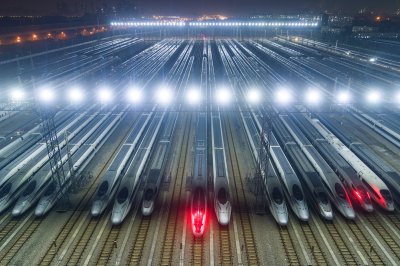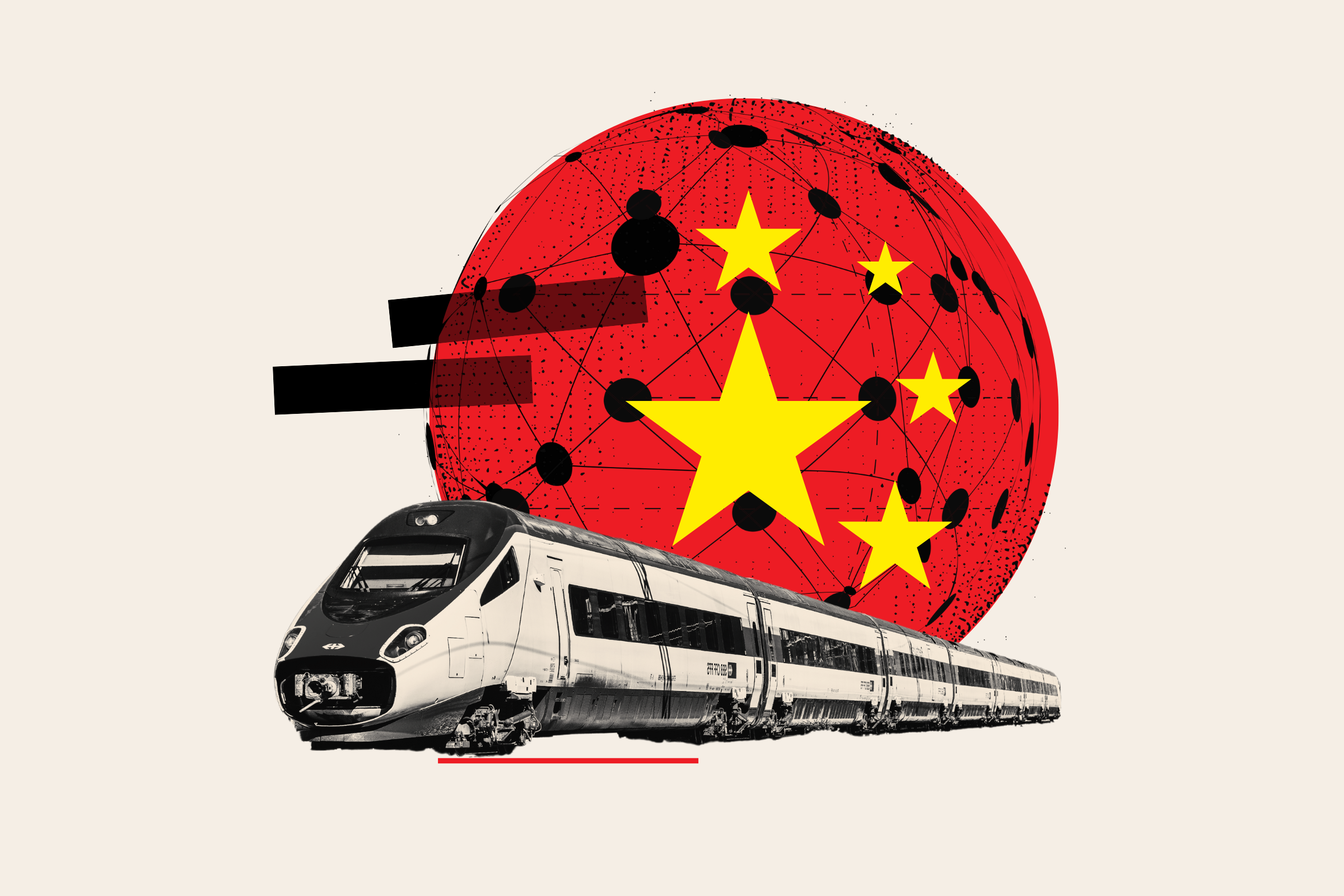China has established the world’s most extensive high-speed railway network in just two decades.
Since the first line launched in 2008, the network has grown to roughly 25,000 miles, more than double the combined length of the rest of the world’s high-speed railways and long enough to circle the Earth.
A passenger train is considered high-speed if it travels at least 124 mph on upgraded tracks or 155 mph on new tracks. More than 20 countries currently have high-speed rail networks, mainly European and East Asian states but also Saudi Arabia, Turkey and Uzbekistan.
Photo-illustration by Newsweek
The planning began in the 1990s when China was experiencing high economic growth but also infrastructure challenges. The enterprise gained momentum during China’s “speed up” campaign in the late 1990s and 2000s, aimed at increasing the speed of commercial trains.
The first high-speed rail line, launched in 2008, linked Beijing with Tianjin, just 75 miles away. During the 2008 global financial crisis, China ramped up investments in infrastructure, including high-speed rail, to stimulate the economy and create jobs.
Initially, China relied on technology transfer agreements with foreign companies such as Alstom, Siemens and Kawasaki Heavy Industries. Over time, China developed significant domestic expertise and innovation, becoming a leader in high-speed rail technology.
1 of 2

AFP via Getty Images

AFP via Getty Images

Getty Images
This approach involved integrating and eventually improving on foreign technology with domestic innovations.
“While absorbing the advanced experience of other countries, China’s high-speed railways attaches importance to independent innovation and has established a world-class technology system with independent intellectual property rights,” embassy spokesperson Liu Pengyu told Newsweek.
China’s government has focused on creating a dense and connected network. The high-speed rail now links major cities, reduces travel times and boosting connectivity between regions, covering 93 percent of cities with populations over a half-million as of the end of 2021.
China’s ambitions continue, with plans to extend the high-speed rail network to 31,000 miles by 2025 and to 43,495 miles by 2035.
The ability of China’s authoritarian government to quickly marshal vast resources for major projects is an “institutional advantage,” according to the embassy.
Despite the benefits, however, the high-speed rail network has not generated enough revenue to cover its substantial initial investment and ongoing maintenance costs.
China State Railway Group, the state-owned operator, is heavily indebted, with about $900 billion in liabilities by the end of 2021. This has prompted an increase in ticket prices, a rare move in the country.

Neighboring Japan has the second-most extensive high-speed rail network in Asia, third in the world, at 2,000 miles. The country opened the world’s first high-speed railway, the Shinkansen, in 1964.
South Korea launched its first high-speed rail line, the Seoul-Busan line, in 2004. Today, it has two high-speed rail operators and four lines totaling 542 miles. Taiwan in 2007 began operating its high-speed railway, which runs 217 miles north to south.
In recent years China has also expanded its high-speed rail network to bordering countries, including a line connecting China’s Kunming with the Laotian capital of Vientiane and another that will link China with Thailand.
These projects, part of China’s Belt and Road Initiative (BRI), have mainly been funded through a mix of Chinese state loans, investments, and partnerships with host countries. They have not only increased regional transportation links but also served as an effective form of Chinese soft power.
Uncommon Knowledge
Newsweek is committed to challenging conventional wisdom and finding connections in the search for common ground.
Newsweek is committed to challenging conventional wisdom and finding connections in the search for common ground.
